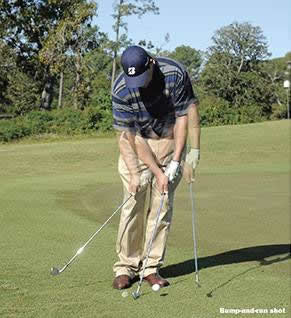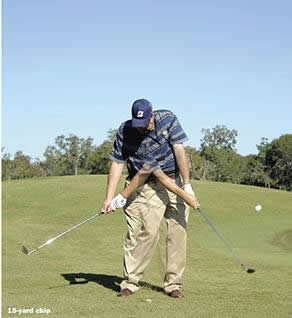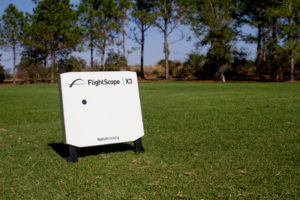In this article I would like to focus on the short game. Let’s take for example chip shots around the collars and fringes (assuming you have a good lie), most amateurs would probably pull out a sand wedge or a high lofted club and try to carry the ball to the hole and stop it. When they should pull out an 8 iron or 6 iron to help get the ball on the putting surface as soon as possible and have the ball roll to the hole.
There are a number of benefits to getting the ball on the putting surface quicker. Instead of using a high lofted club lets start with an eight iron. Align the grooves of the club perpendicular to your target line (highest breaking point of the shot), set your feet up slightly open to your target line, make sure that you have roughly 65-70% of your body weight on your lead foot, position the ball off of your back foot, align the back of your lead hand down your target line and have your hands set up in front of the ball. You should be in a more upright position than in a normal setup and the heel of the golf club should be off the ground to eliminate a fat shot. The stroke you’re going to make with this shot is like an elongated putting stroke to promote a type of bump and run shot. No extra effort needs to be made in trying to generate more club head speed. Make sure that your wrists do not hinge, and keep them firm. Keep the back of the lead hand firm and going towards your target, and you should have no trouble in keeping the ball on line.
To help judge distance, keep a consistent tempo and let the change in distance you take the club back and through determine your distance along with choosing the proper lofted club. For longer shots, a 6 iron or a lower lofted club may be needed. For shorter shots, a 9 iron or a higher lofted club may be used. You should always try to get the ball on the green as soon as possible. Some of the benefits of getting the ball on the green early are that you can watch the terrain of the green and how the ball rolls out, takes out the guess work in judging the spin on the ball and control with the hands, and watching the shot roll out makes the next shot easier to read.
Now let’s look at shots from 15 to 30 yard shots around the green. Depending on the type of shot and how much green you have to work with, shots from this distance can be made easier by controlling your distance. In order to control your distance better, you need to have good consistent tempo, pressure with the hands, and distance of the swing back and through needs to be mirrored. Set up is slightly different than the bump and run. Set up with the ball in the middle of your stance. Select the correct lofted club pending on the distance you want to carry the ball and the change in elevation to the green surface. Most shots will require some kind of wedge to be used. These shots also require you to set up with most of your weight on your lead foot, because you do not need to transfer your weight through the shot.
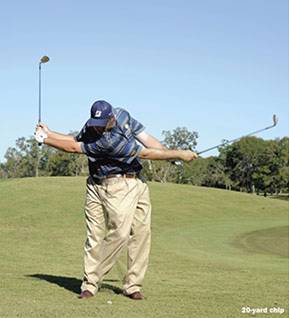
Again, set up with your hands in front of the ball. Use this set up with each shot whether it’s from 15 yards or 30 yards. Try manipulating the distance you take the club back and through to help you with your distance. For instance if you have a 15 yard chip shot, you might only take the club back to about 8 o’clock and through to 4 o’clock. For a 20 yard chip shot, you might take the club back to 9 o’clock and through to 3 o’clock.
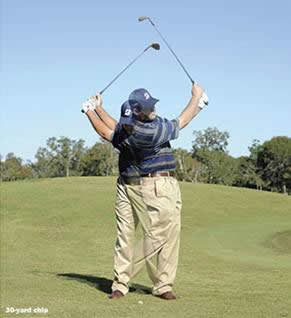
For a 30 yard chip shot, you might take the club back to 11 o’clock and through to 1 o’clock. I referenced hours on a clock to help get the idea of mirroring your follow through with your back swing. If you need to lift the ball in the air higher, set up with the ball more off of your lead foot and set your hands back behind the ball to help add loft to the shot, and if you have to hit the ball lower and allow for more roll, set the ball off of your back foot with your hands in front of the ball. Remember the more loft you have, the shorter the ball will roll.
Getting up and down from just off the green is an easy way to accomplish lowering your scores. Hopefully with the correct amount of practice you will shave strokes off your score.
